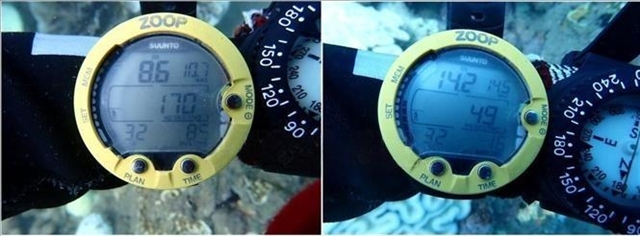 |
| Coral reefs in the Côn Đảo archipelago (Bà Rịa-Vũng Tàu Province) have suffered mass bleaching due to unusually high water temperatures and sediments and have been eaten by spiny starfish. VNA Photo |
BÀ RỊA – VÙNG TÀU – Coral reefs in the Côn Đảo archipelago off Bà Rịa – Vũng Tàu Province have been bleaching and dying due to abnormally high water temperatures, the Côn Đảo National Park management said on June 10.
The management and the Institute of Oceanography carried out a study at the end of May that discovered that sediments and being eaten by spiny starfishes were also affecting the corals.
Bleaching has occurred at 80-100 per cent of reefs in places in the east such as Đầm Tre Bay and Hòn Cau, Hòn Tài and Cực Gà islets.
Some 15-20 per cent of the coral there have died, with most losing their polyps and being covered in mosses.
In the western area, particularly Hòn Tre Lớn and Hòn Tre Nhỏ islets and Ông Cường and Ông Đụng beaches, 60 to 70 per cent have been bleached and 10 per cent have died.
Abnormal water temperatures in Côn Đảo have caused the corals to expel the colourful algae living in their tissues, leading to mass bleaching, according to Thái Minh Quang of the institute.
The ideal temperatures for corals’ survival range from 24°C to 30°, but it was 32°C at the time of the observation.
 |
| A study by the Côn Đảo National Park management and the Institute of Oceanography at the end of May found water temperatures topped 32° Celsius at both 8.6 and 14.2 metres depth, which causes corals to expel the colourful algae living in their tissues. VNA Photo |
If the high water temperatures continue, they will lower the recovery rate of the reefs and cause a large number of them to die.
Besides, corals off Ông Cường Beach and Hòn Cau and Hòn Tài islets have been eaten by spiny starfishes that also suppress their larvae from replenishing.
Those off Ông Cường Beach have been affected by sediments, which can contain toxicants, pathogens and nutrients that impact coral health and kill them almost instantly.
Reports show that mass coral bleaching in Côn Đảo started in May, reached its peak around June 2-5 and might last until June 20.
Nguyễn Khắc Pho, director of the Côn Đảo National Park management, said more observations and assessments would be critical for evaluating the impacts of mass bleaching and recovery rates of coral reefs, and deploying restoration solutions.
He said the park would postpone restoration programmes since corals have a very low recovery rate after bleaching, and extracting larvae for restoration could also weaken adults.
Besides, socio-economic activities such as fishing, tourism and diving services around conservation areas in the park should be minimised for three months after bleaching, he said.
The park would also collect spiny starfish and promptly develop a plan to revive severely affected coral reefs, he said.
Coral reefs in Việt Nam, especially Côn Đảo, have suffered bleaching periodically in the last 20 years, notably in 1998, 2000, 2002, 2010, 2016, and 2019. – VNS
- Reduce Hair Loss with PURA D’OR Gold Label Shampoo
- Castor Oil Has Made a “Huge” Difference With Hair and Brow Growth
- Excessive hair loss in men: Signs of illness that cannot be subjective
- Dịch Vụ SEO Website ở Los Angeles, CA: đưa trang web doanh nghiệp bạn lên top Google
- Nails Salon Sierra Madre
 VnExpress News The News Gateway of Vietnam
VnExpress News The News Gateway of Vietnam





